Vegetable gardening for beginners: 7 tips to start growing your own crops
With our guide to vegetable gardening for beginners, you'll be enjoying a delicious harvest in no time

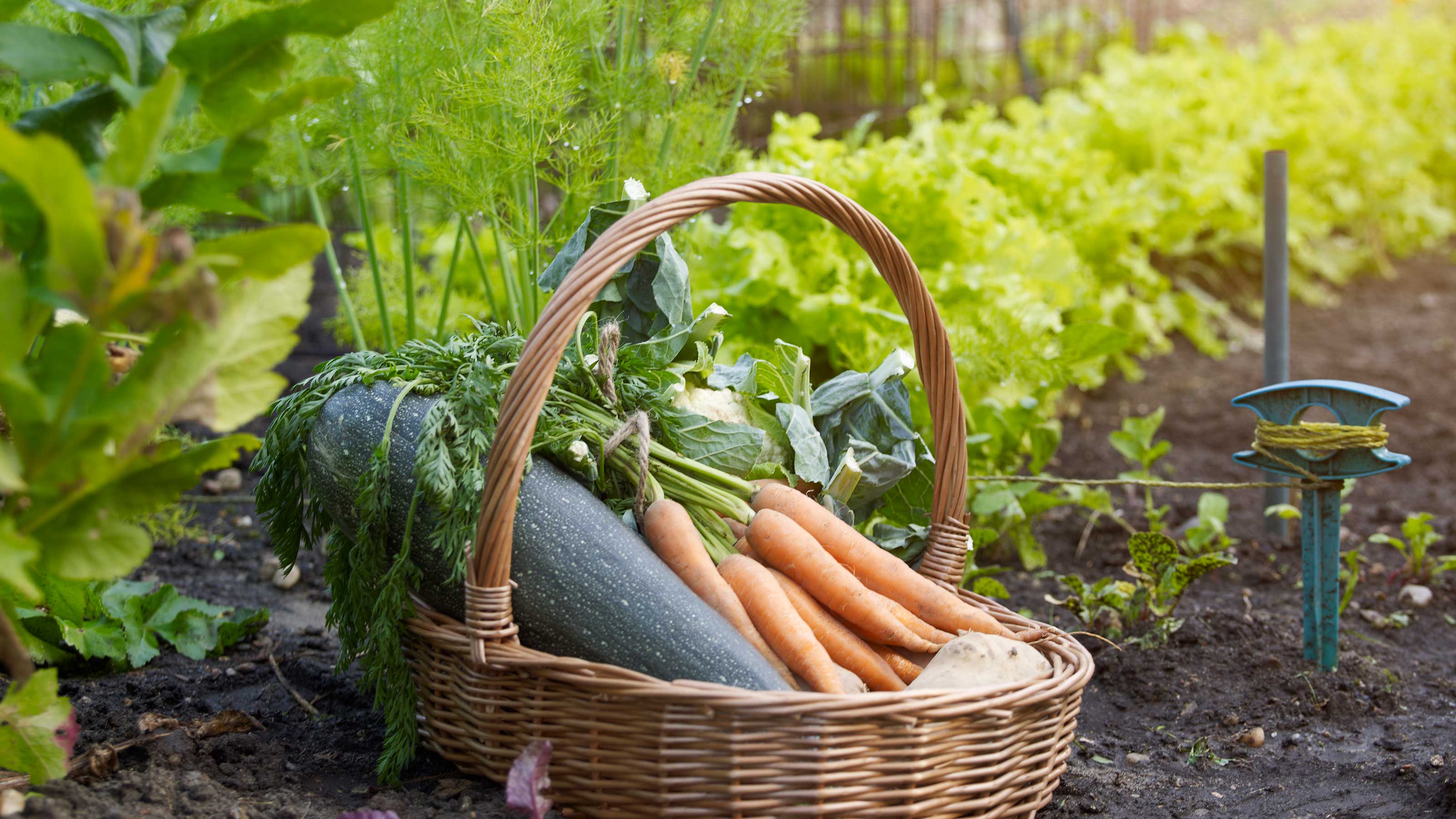
If you’re new to growing your own crops, then our guide on vegetable gardening for beginners is a good place to start.
We’d say that cultivating, picking, and then eating homegrown veggies is one of life’s simplest yet greatest pleasures. And with the right approach, a kitchen garden is totally attainable, no matter the size of your outdoor space. Even if you’re a total novice, it’s easy to grow a few salad varieties in pots, a tomato plant or two in a mini greenhouse, or a glut (as if often the way) of courgettes in a raised bed.
The best part is, starting a vegetable garden can easily be done on a budget – and of course, will supply you with lots of fresh produce without needing to go to the store. Your home-cooked meals are guaranteed to get a boost in both flavor and nutrients, and the whole process is good for the soul, too.
7 top tips for vegetable gardening for beginners
With help from the experts, we’ve brought together some top advice to help you begin your new veg-growing endeavors. You’ll be enjoying a delicious harvest in no time.
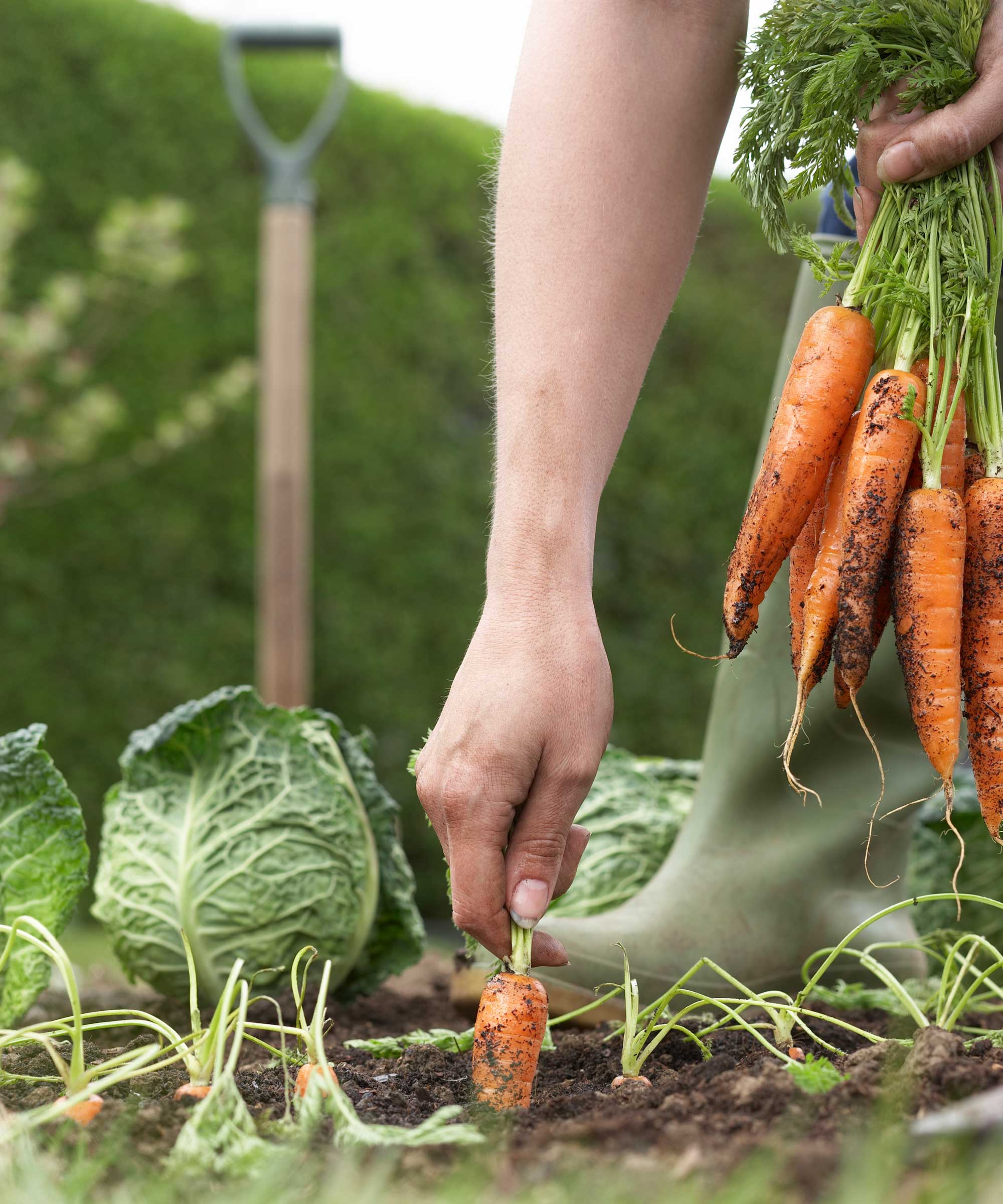
1. Plan your vegetable garden
Every good garden – whether it’s filled with mostly flowers or veggies – needs to start with a plan. And when making your plan, there are a few key factors to consider, such as how much space you have available, how much sun the area gets, and the soil type you have.
‘Don’t forget that where room is at a premium, you can grow most vegetables in containers,’ says Jack Wallington, a garden designer speaking on a video for the RHS. Even just one or two large planters can host myriad delicious crops.
'Plants like tomatoes, salad leaves, chilis, beetroot, and dwarf varieties of peas and beans are all worthy contenders for this,' says Sarah Squire, Chairman of Squire's Garden Centres. 'Tomatoes may require a little more attention than the others on this list but are too delicious not to mention. Strawberries make good outdoor "pot plants", too,' she adds. You can even grow potatoes in containers.
Growing vegetables in pots is also a good solution for paved plots, or where soil is heavy, weed-ridden, and difficult to work with. Just remember to choose planters that have drainage holes, and keep on top of watering as they tend to dry out quickly.
If you do decide to grow your veggies straight in the ground, then consider whether you need to improve the soil first by removing any weeds, and digging in plenty of compost and perhaps some grit for drainage. You may want to opt for raised garden beds to make it easier to control the growing conditions (plus they look very attractive).
‘All vegetables prefer an open, sunny position, but some will tolerate partial shade,’ says John Negus, a gardening expert from Amateur Gardening. However, if you don’t have much sun in your plot, don’t despair. There are still varieties you can grow: he suggests lettuces (‘Little Gem’ and ‘Brighton’), green-leaved and white-stemmed ‘Barese’ chard, ‘Early Nantes’ carrots, and ‘Boltardy’ and ‘Chioggia’ beetroots.
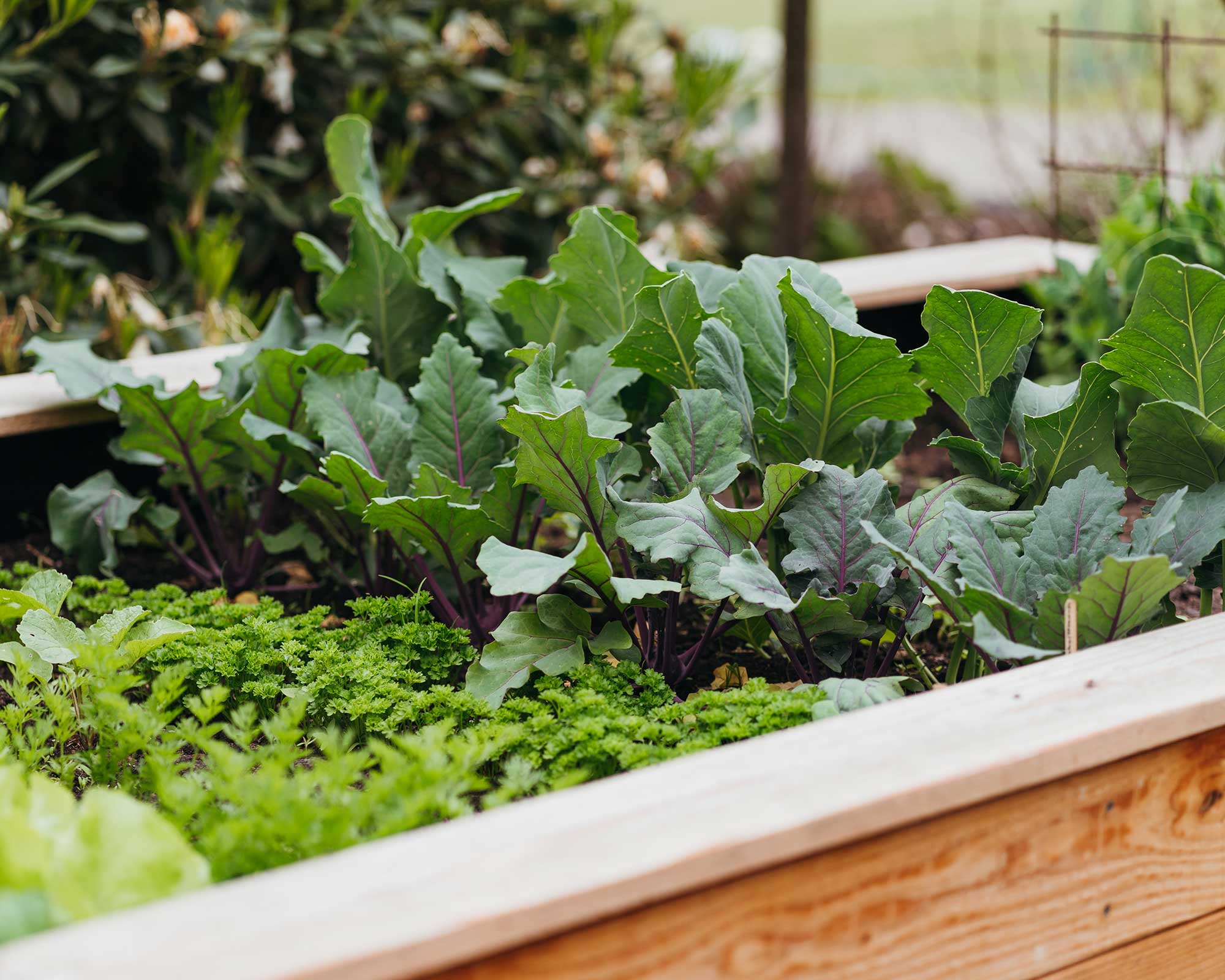
2. Keep down costs
As mentioned, vegetable gardening for beginners – and experts – really needn’t cost a fortune.
Whether you’re growing them in pots or raised beds, look to use recycled and reclaimed materials to keep costs down.
Seeds are more affordable than plug plants. Plus, you can always start with just a few packets, or even arrange to swap half-used packets with fellow gardener friends to extend the range of your crops.
Our tips on how to save money at the garden center and how to get free plants may also come in handy to help get you started without splashing the cash.
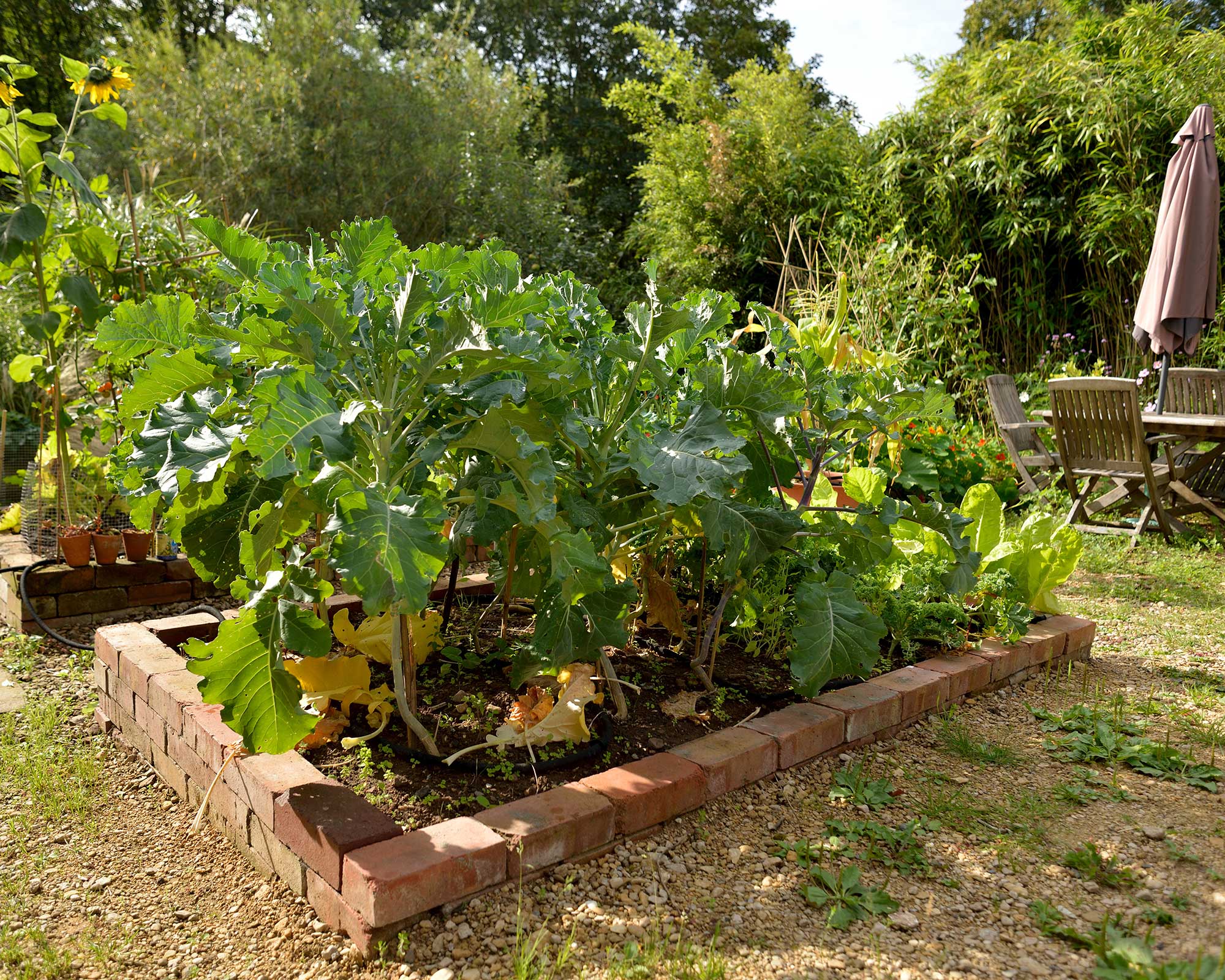
3. Pick easy vegetable varieties to start with
Choosing the vegetables you want to grow is super exciting. Narrow down your options by considering what tastes better homegrown and can be the most costly in the supermarket, Jack suggests. Think about how long they’ll take until they’re ready to harvest, too – you will probably want at least a few that will provide quick results, such as salad leaves.
And remember – it’s important to grow things that you actually want to eat. ‘Aside from the enjoyment of spending time cultivating your vegetable patch, the result is where it all culminates,’ says the team at Power Sheds, who teamed up with the allotment enthusiasts in the nearly 50,000-strong Facebook community ‘Allotment Hints & Tips’ for top vegetable-growing advice. ‘Grow the things you’d usually have on your dinner table to give yourself the satisfaction of eating and enjoying the fruits of your labor at the end.’
If you’re a total newbie to gardening, it’s wise to start with just a select few varieties: that way you can really get to grips with tending to each and helping them thrive. There are lots of easy vegetables to grow that will reward you with tasty crops for little effort. The team at Thompson & Morgan, for instance, suggests radishes, as you can enjoy them just four weeks after sowing. They also suggest growing beetroots, which can be sown directly in the ground and only require you to thin out seedlings as they grow, which is simple. Runner beans and peas are other recommendations of theirs – the more you pick of them, the more will grow.
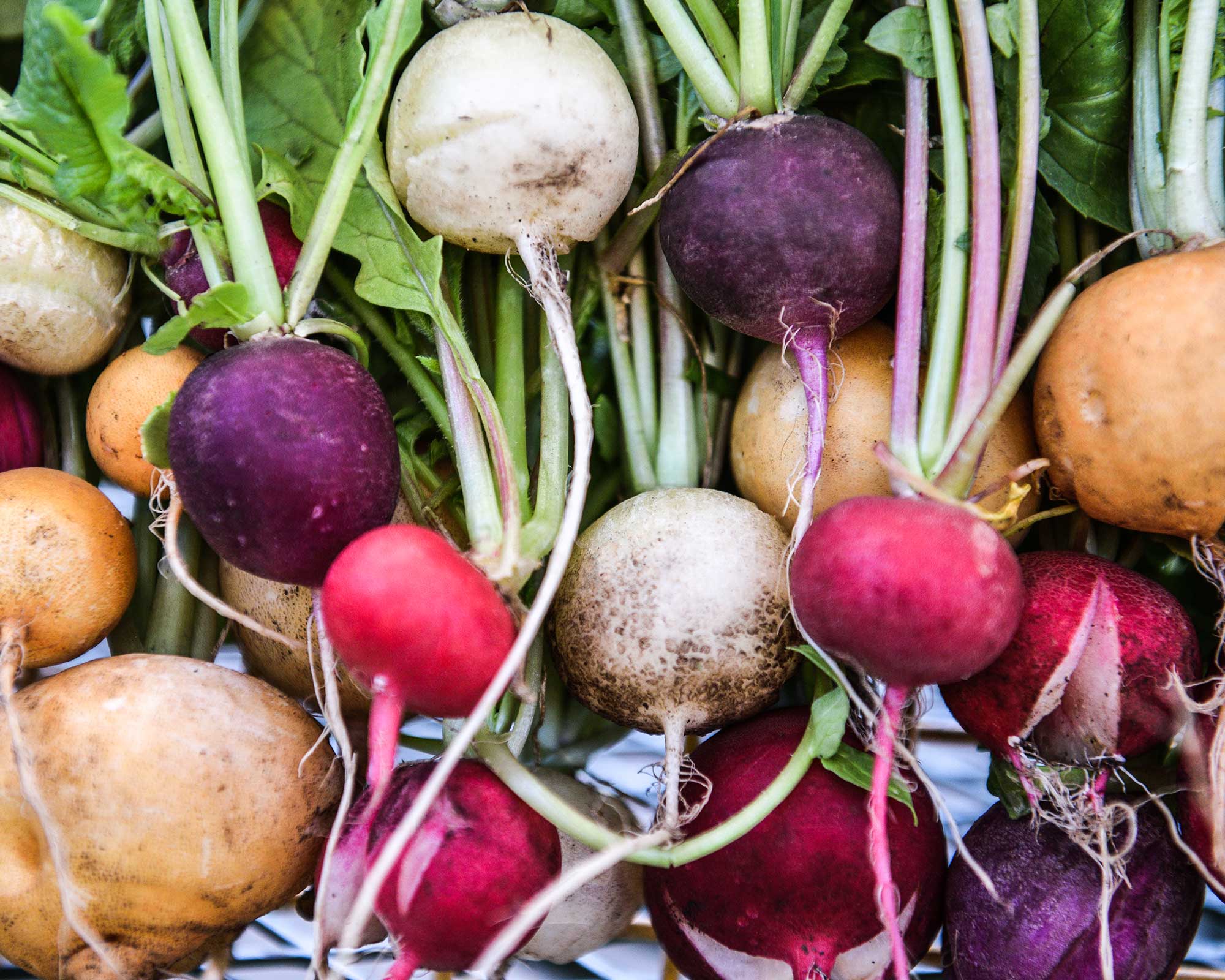
4. Read seed packets carefully
Every seed packet will have instructions on when and how to sow, so do read up on these before you buy. Our vegetable planting calendar will also come in useful to plan when to plant.
Many crops can be started early indoors, or in a greenhouse, says Jack. These include late winter lettuces and cauliflowers. With tropical crops, such as chilies or aubergines, an ‘early start is the best way to get them to produce a worthwhile crop,’ he adds.
All you need to germinate seeds indoors is some seed compost and seed trays, plus a propagator with a lid or simply a sunny windowsill and a see-through plastic bag to cover them. Keep the soil around seedlings moist, says the RHS, using tap water to reduce the risk of pathogens which could affect their growth.
When they are big enough to handle, you can transfer them to individual pots. If moving them outside, ‘harden’ them off first – this means gradually acclimatizing them to outdoor temperatures – before putting them in their final position.
If you want results quicker, you may choose to opt for plug plants rather than growing your veggies from seeds. ‘Plug plants are widely available from garden centers and online, and all you need to do is pot them on once you get them home, nurture them for a couple of months, and plant them out after hardening them off,’ says John Negus.
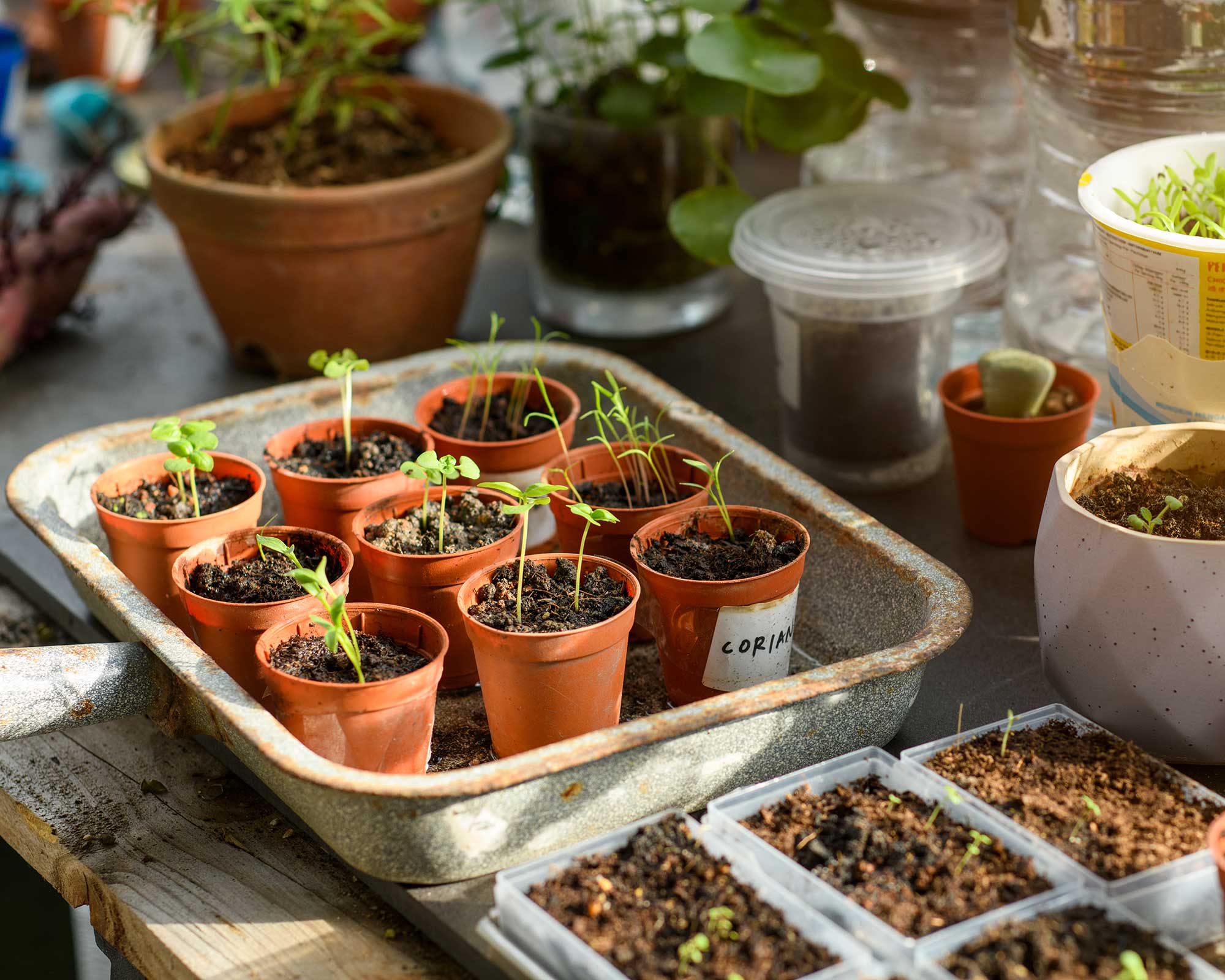
5. Don’t forget to water
Water for your vegetable garden is an absolute must, which means, in dry weather, you’ll need to provide it yourself. ‘When a plant goes short of water it stops growing and often starts to go to seed prematurely (bolting) – or just dies,’ says the RHS.
Aim to keep the compost around your crops consistently moist. Allowing soil to dry out completely can result in crops splitting when you do give them water again, explains the RHS.
Think about ways to collect rainwater in the garden to keep energy costs down – a water butt or rain barrel, for instance, is a simple approach. And consider how you’re going to water plants while away on vacation, too – you wouldn’t want to return to see all your hard work spoiled by excessive sunshine and drought.
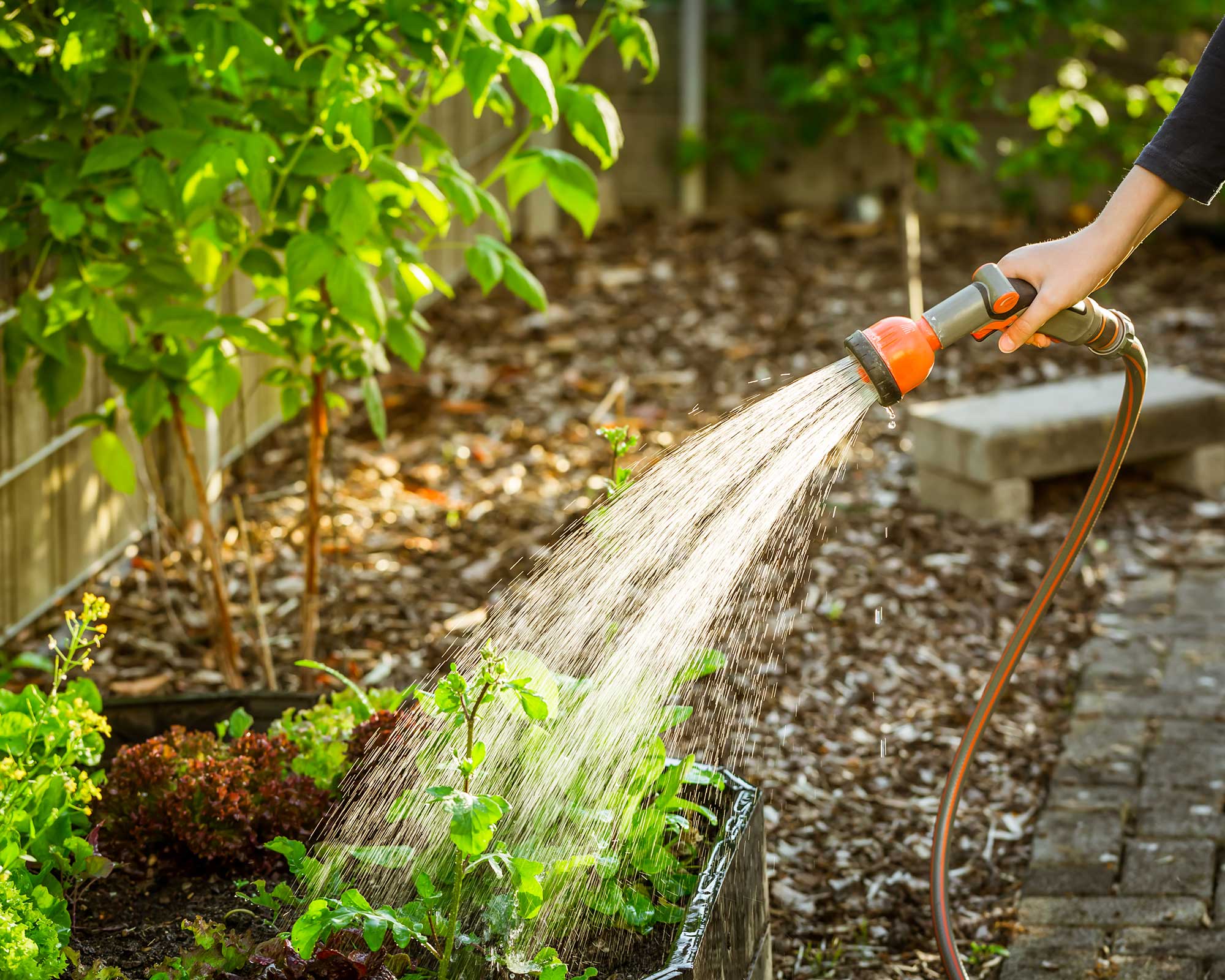
6. Watch out for pests
Pests can be a real pain for any gardener, regardless of experience. No one wants to see their precious plants destroyed by interlopers overnight.
Netting can provide protection from birds and butterflies, while there are plenty of ways to get rid of aphids, slugs, and even rabbits.
Cats can also be a problem as are known for digging up veg beds. ‘Protect newly-planted areas with circles of chicken wire for a few weeks while plants put down roots,’ suggests John Negus.
He also notes that there are a few products that are designed to deter cats, including pellets soaked in essence of lion dung called Silent Roar, available on Amazon.
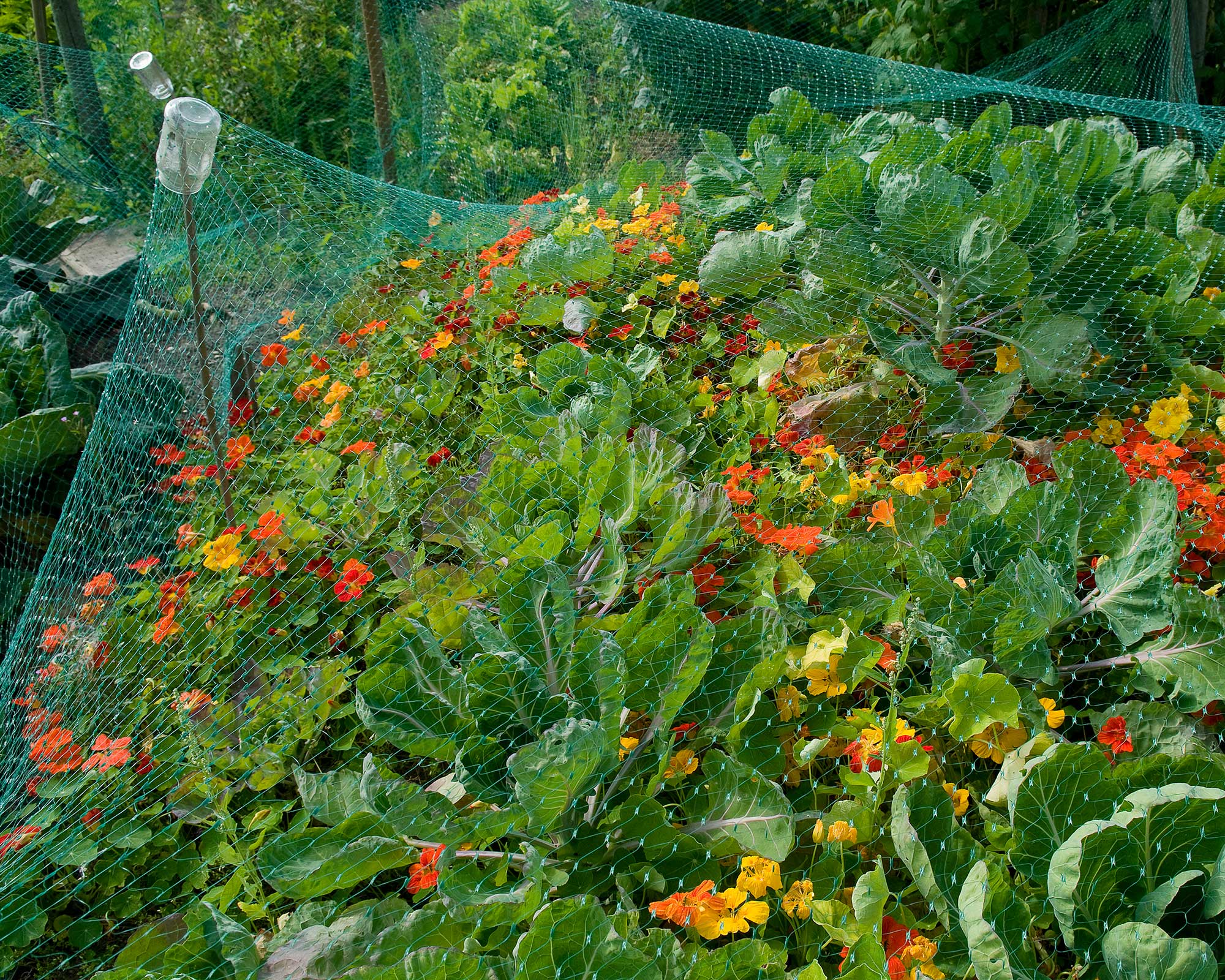
7. Harvest at the right time, in the right way
For the very best results, you’ll want to harvest your lovingly-tended-to crops correctly. Some take much longer than others to reach maturity – cabbages, for instance – and require patience. But others may take a matter of a few weeks, while if you know how to harvest lettuce so it keeps growing, you can treat it as a cut-and-come-again crop.
Knowing when to harvest your vegetables will reward you with the tastiest crops as they’ll be at their peak. Ensure you know how to store them properly, too, so that all that work doesn’t go to waste.
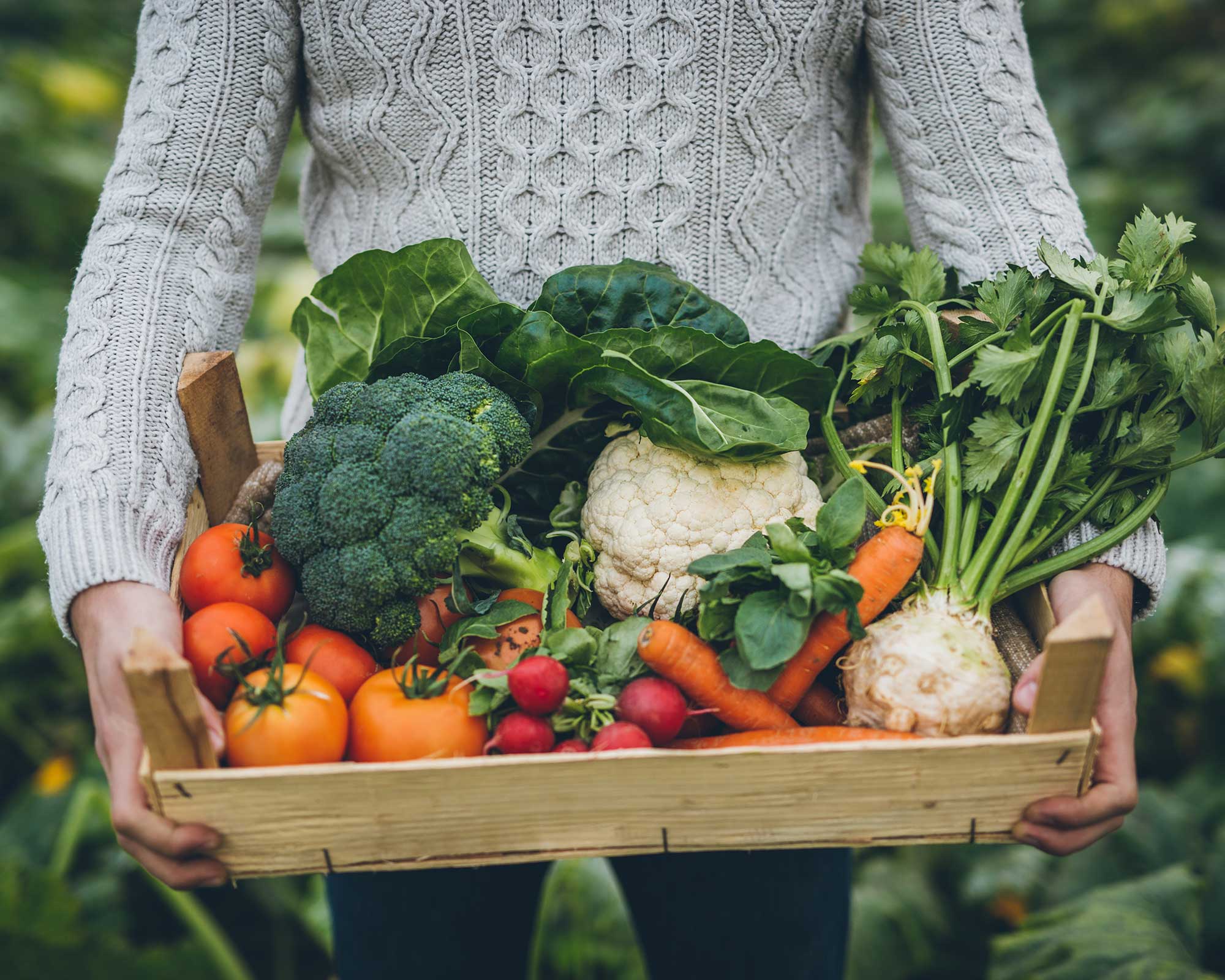

The garden was always a big part of Holly's life growing up, as was the surrounding New Forest where she lived. Her appreciation for the great outdoors has only grown since then. She's been an allotment keeper, a professional gardener, and a botanical illustrator – plants are her passion.
